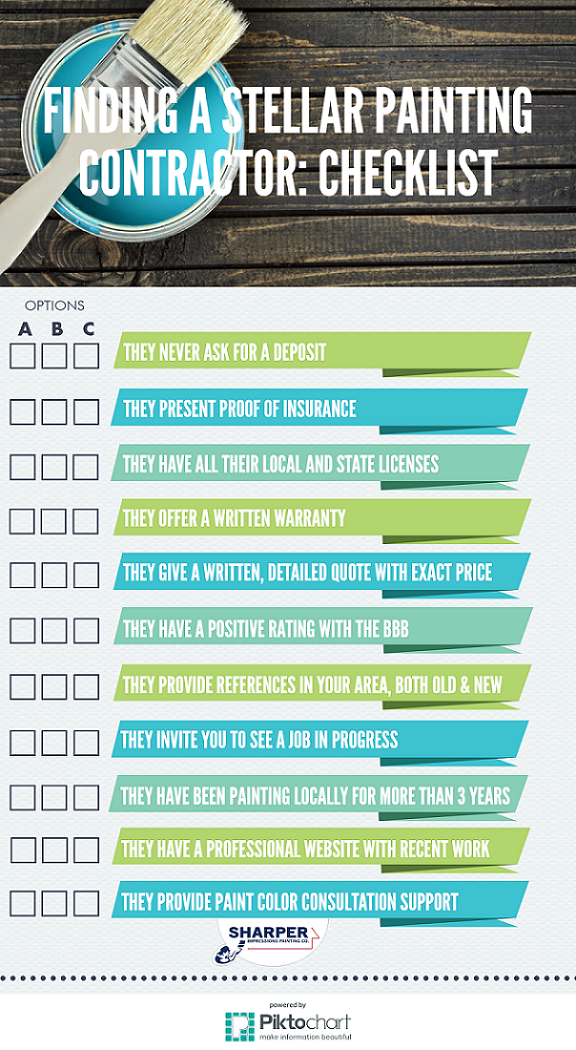Check Out The Connection Between Climate Aspects And The Success Of Your External Painting Task To Achieve A Remarkable Result
Check Out The Connection Between Climate Aspects And The Success Of Your External Painting Task To Achieve A Remarkable Result
Blog Article
Post Composed By-Greenwood Thuesen
Recognizing just how weather conditions can affect the outcome of an external paint undertaking is paramount for achieving a perfect surface. From temperature changes modifying paint bond to moisture degrees impacting drying times, each aspect of climate plays a significant duty in the success of your project. Moreover, wind speed and precipitation can introduce unanticipated obstacles that might compromise the top quality of the outcome. As we navigate via the nuances of weather condition's effect on exterior paint, it comes to be noticeable that precise preparation and strategic timing are crucial for guaranteeing a specialist and resilient outcome.
Perfect Temperature Level Variety for Paint
When thinking about outside paint jobs, the suitable temperature level range plays a vital role in achieving optimum results. Painting in the ideal temperature level conditions makes certain that the paint sticks effectively to the surface, dries evenly, and remedies efficiently. Generally, the suggested temperature level variety for external painting is between 50 to 85 degrees Fahrenheit.
Painting in https://cabinet-painters-near-me77665.blogoscience.com/38112640/the-importance-of-working-with-residential-painters-for-your-home-remodelling-efforts listed below 50 levels Fahrenheit can lead to concerns such as bad paint attachment, prolonged drying out times, and an enhanced chance of breaking or peeling off.
On the other hand, paint in temperatures above 85 levels Fahrenheit can create the paint to dry too promptly, resulting in blistering, bubbling, and an irregular coating.
To accomplish the very best outcomes, it is vital to check the weather forecast before beginning an exterior paint task. Ideally, objective to paint throughout mild climate condition with modest temperature levels and reduced humidity levels.
Impacts of Humidity on Paint Drying
Moisture degrees significantly affect the drying out procedure of paint related to exterior surfaces. High humidity can extend the drying out time of paint, resulting in prospective problems such as trickling, streaking, and even the formation of bubbles on the painted surface area. Excess wetness airborne slows down the dissipation of water from the paint, hindering the treating procedure. This is particularly troublesome for water-based paints, as they count on evaporation for drying.
On the other hand, reduced humidity levels can additionally influence paint drying. Exceptionally https://www.housedigest.com/1043041/does-painting-your-homes-brick-exterior-hurt-its-resale-value/ might create the paint to completely dry as well promptly, causing inadequate bond and a rough coating. In such cases, adding a paint conditioner or splashing a fine mist of water airborne can assist regulate humidity levels and improve the painting end result.
To ensure https://indoor-painters-near-me19754.activoblog.com/33702039/step-up-your-service-game-with-a-business-painting-contractor-discover-the-game-changing-benefits-that-can-raise-your-space drying conditions, it is advisable to paint when the moisture levels range between 40% and 50%.
Tracking moisture degrees and taking appropriate actions can assist attain a smooth and resilient paint coating on exterior surface areas.
Wind and Precipitation Considerations
Wind rate and precipitation are important factors that substantially impact the success of an external painting job.
When it comes to wind, both speed and direction are important considerations. High wind rates can trigger paint to dry too quickly, causing a poor finish with possible concerns like splitting or unequal texture. Furthermore, wind can bring debris that might comply with the damp paint, causing blemishes. Consequently, painters need to aim to work on days with light to moderate winds for optimal paint conditions.
On the other hand, precipitation, whether rain or snow, can be very destructive to the end result of an exterior paint job. Wetness from rainfall can prevent paint attachment, triggering peeling off and bubbling over time. It is critical to avoid paint throughout rainy or snowy weather to make certain the longevity and quality of the paint job. Painters should also allow sufficient time for the surface area to completely dry completely after any type of rainfall prior to starting or returning to the painting process.
Conclusion
Finally, weather play a substantial role in the end result of an external painting task. The suitable temperature level variety, humidity levels, wind rate, and rainfall all add to the success or failing of the paint task.
It is essential to consider these factors and strategy appropriately to ensure proper paint adhesion, drying out times, and general top quality of the ended up product.
